Sustainable 3D printed footbridge to be built in Rotterdam using DSM thermoplastics
MakerBot launches LABS extruder for METHOD to enable third party engineering material extrusion
3D Printing Industry Review of the year: February 2019
MakerBot establishes METHOD Materials Program to expand 3D printing filament range
3D Printing News Briefs: October 6, 2019
We’ve got lots of material news for you in today’s 3D Printing News Briefs, starting with a Material Development Kit from RPS. Polymaker and Covestro are releasing three new materials and EOS has introduced a new TPU material for industrial 3D printing. Moving on, CASTOR and Stanley Black & Decker used EOS 3D printing to reduce costs and lead time, and Velo3D is partnering with PWR to make high performance heat exchangers.
RPS Introduces Material Development Kit for NEO800
 UK 3D printer manufacturer RPS just launched its NEO Material Development Kit, which was designed by company engineers to be used as a polymer research and development tool for its NEO800 SLA 3D printer. The MDK comes in multiple platform and vat sizes, and allows developers to work with different resin formulations, so that R&D companies can work to develop a range of polymers that are not available in today’s industry. Users can print single layer exposure panes with Titanium software and the 1 liter vat in order to find the photo-speed of the formulation they’re developing; then, tensile testing of different material formulations can commence. Once this initial testing is finished, developers can scale up to the 13 liter vat – perfect for 3D printing prototype parts for use in optimizing final configuration settings.
UK 3D printer manufacturer RPS just launched its NEO Material Development Kit, which was designed by company engineers to be used as a polymer research and development tool for its NEO800 SLA 3D printer. The MDK comes in multiple platform and vat sizes, and allows developers to work with different resin formulations, so that R&D companies can work to develop a range of polymers that are not available in today’s industry. Users can print single layer exposure panes with Titanium software and the 1 liter vat in order to find the photo-speed of the formulation they’re developing; then, tensile testing of different material formulations can commence. Once this initial testing is finished, developers can scale up to the 13 liter vat – perfect for 3D printing prototype parts for use in optimizing final configuration settings.
“This NEO Material Development Kit now opens the door for large industrial chemical companies such as BASF, DSM and Heinkel to push the boundaries of UV photopolymers,” said David Storey, the Director of RPS. “The industry is looking for a quantum jump in materials to print end-user production parts from the stereolithography process.”
New Polycarbonate-Based Materials by Polymaker and Covestro
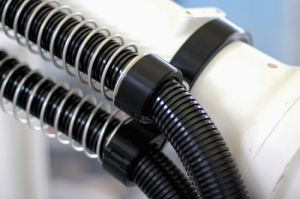 Advanced 3D printing materials leader Polymaker and polymer company Covestro are teaming up to launch three polycarbonate-based materials. These versatile new materials coming to the market each have unique properties that are used often in a variety of different industries.
Advanced 3D printing materials leader Polymaker and polymer company Covestro are teaming up to launch three polycarbonate-based materials. These versatile new materials coming to the market each have unique properties that are used often in a variety of different industries.
The first is PC-ABS, a polycarbonate and ABS blend which uses Covestro’s Bayblend family as its base material. Due to its high impact and heat resistance, this material is specialized for surface finishings such as metallization and electroplating, so it’s good for post-processing work. Polymaker PC-PBT, which blends the toughness and strength of polycarbonate with PBT’s high chemical resistance, is created from Covestro’s Makroblend family and performs well under extreme circumstances, whether it’s subzero temperatures or coming into contact with hydrocarbon-based chemicals. Finally, PolyMax PC-FR is a flame retardant material that’s based in Covestro’s Makrolon family and has a good balance between safety and mechanical performance – perfect for applications in aerospace motor mounts and battery housings.
EOS Offers New Flexible TPU Material
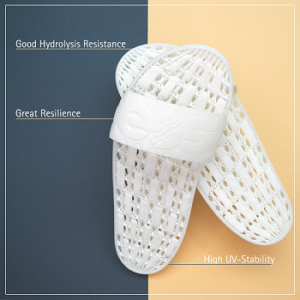 In another materials news, EOS has launched TPU 1301, a new flexible polymer for industrial, serial 3D printing. Available immediately, this thermoplastic polyurethane has high UV-stability, great resilience, and good hydrolysis resistance as well. TPU materials are often used in applications that require easy process capabilities and elastomeric properties, so this is a great step to take towards 3D printing mass production.
In another materials news, EOS has launched TPU 1301, a new flexible polymer for industrial, serial 3D printing. Available immediately, this thermoplastic polyurethane has high UV-stability, great resilience, and good hydrolysis resistance as well. TPU materials are often used in applications that require easy process capabilities and elastomeric properties, so this is a great step to take towards 3D printing mass production.
“The EOS TPU 1301 offers a great resilience after deformation, very good shock absorption, and very high process stability, at the same time providing a smooth surface of the 3D printed part,” said Tim Rüttermann, the Senior Vice President for Polymer Systems & Materials at EOS. “As such the material is particularly suited for applications in footwear, lifestyle and automotive – such as cushioning elements, protective gears, and shoe soles.”
You can see application examples for TPU 1301 at the EOS booth D31, hall 11.1, at formnext in Frankfurt next month, and the material will also be featured by the company at K Fair in Dusseldorf next week.
CASTOR, Stanley Black & Decker, and EOS Reduce Costs and Lead Time
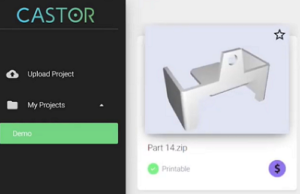 Speaking of EOS, Stanley Black & Decker recently worked with Tel Aviv startup CASTOR to majorly reduce the lead time, and cost, for an end-use metal production part that was 3D printed on EOS machinery. This was the first time that 3D printing has been incorporated into the production line of Stanley Engineered Fastening. In a CASTOR video, EOS North America’s Business Development Manager Jon Walker explained that for most companies, the issue isn’t deciding if they want to use AM, but rather how and where to use it…which is where CASTOR enters.
Speaking of EOS, Stanley Black & Decker recently worked with Tel Aviv startup CASTOR to majorly reduce the lead time, and cost, for an end-use metal production part that was 3D printed on EOS machinery. This was the first time that 3D printing has been incorporated into the production line of Stanley Engineered Fastening. In a CASTOR video, EOS North America’s Business Development Manager Jon Walker explained that for most companies, the issue isn’t deciding if they want to use AM, but rather how and where to use it…which is where CASTOR enters.
“They have a very cool software in which we can just upload the part of the assembly CAD file, and within a matter of minutes, it can automatically analyze the part, and give us the feasibility of whether the part is suitable for additive manufacturing or not. And in case it is not suitable, it can also let us know why it is not suitable, and what needs to be changed. It can also tell us what is the approximate cost, which material and printer we can use,” said Moses Pezarkar, a Manufacturing Engineer at Stanley’s Smart Factory, in the video.
To learn more, check out the case study, or watch the video below:
PWR and Velo3D Collaborating on 3D Printed Heat Exchangers
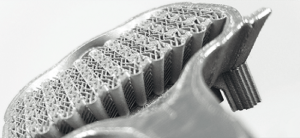 Cooling solutions supplier PWR and Velo3D have entered into a collaborative materials development partnership for serial manufacturing of next-generation heat exchangers, and for the Sapphire metal 3D printer. PWR will be the first in the APAC region to have a production Sapphire machine, which it will use to explore high-performance thermal management strategies through 3D printing for multiple heat exchange applications. Together, the two companies will work on developing aluminum alloy designs with more complex, thinner heat exchange features.
Cooling solutions supplier PWR and Velo3D have entered into a collaborative materials development partnership for serial manufacturing of next-generation heat exchangers, and for the Sapphire metal 3D printer. PWR will be the first in the APAC region to have a production Sapphire machine, which it will use to explore high-performance thermal management strategies through 3D printing for multiple heat exchange applications. Together, the two companies will work on developing aluminum alloy designs with more complex, thinner heat exchange features.
“PWR chose Velo3D after extensive testing. The Velo3D Sapphire printer demonstrated the ability to produce class-leading thin-wall capabilities and high-quality surfaces with zero porosity. Velo3D and PWR share a passion for pushing the limits of technology to deliver truly disruptive, class-leading, products. We are a natural fit and look forward to building a strong partnership going forward,” said Matthew Bryson, the General Manager of Engineering for PWR.
“Heat exchanger weight and pressure-drop characteristics have a huge impact on performance and are significant factors in all motorsport categories. Using additive manufacturing to print lightweight structures, enhancing performance with freedom-of-design, we have the ability to further optimize these characteristics to the customer’s requirements whilst providing the necessary cooling. The broad design capabilities and extremely high print accuracy of the Velo3D Sapphire 3D metal printer will help us optimize these various performance attributes.”
Discuss these stories and other 3D printing topics at 3DPrintBoard.com or share your thoughts in the comments below.
The post 3D Printing News Briefs: October 6, 2019 appeared first on 3DPrint.com | The Voice of 3D Printing / Additive Manufacturing.
3D Printing Industry News Sliced: KUKA, AIDRO, Spatial, GEFERTEC, Anisoprint, Polymaker
3D printing news Sliced: Modix, CRP Technology, OpenAdditive, Florida Makes, Polymaker
TCT Asia: Ultimaker Introduces Cloud-Based Platform and New 3D Printing Material Alliance Program Partners
The TCT Asia show began today in Shanghai, and desktop 3D printing leader Ultimaker is one of the attendees. The Dutch company made some important announcements at the event today, including the launch of its future-ready Ultimaker Cloud platform, which was designed to support the professional 3D printing workflow and will help speed up the adoption of 3D printing.
As the world transitions to local digital manufacturing, we need a platform solution that will not only make the user workflow more simple but also hasten this transition, while ensuring compatibility with multiple materials and software applications. Due to Ultimaker’s open strategy, important industry partners, like material manufacturers and CAD providers, can integrate with its new cloud-based platform, which will offer more value to users and make the 3D printing experience seamless and reliable.
“Ultimaker Cloud forms the foundation for future value propositions provided by Ultimaker and key industry partners. This is a crucial next step in our journey to speed up the world’s transition to local digital manufacturing,” said Jos Burger, Ultimaker CEO. “I have no doubt that our enabling platform, formed with our global network of software and material partners, makes Ultimaker the preferred solution in the desktop space.”
The first cloud services the platform offers include remote 3D printing, which will provide monitoring and allow print jobs to sent from anywhere to network-enabled Ultimaker 3D printers. Ultimaker Cloud also provides unlimited access to the Marketplace, where registered users can browse materials thanks to exclusive access to print profiles, as well as give feedback to the community and plugin contributors through a rating option. In addition, optimized settings for ideal print results are automatically populated in Ultimaker’s Cura software through the Marketplace. Finally, Ultimaker Cloud offers a way to backup user settings for easier remote access.
 Ultimaker Cloud will be available for download on March 19th, which is also when Ultimaker Cura 4.0, with its updated user interface, will be launched.
Ultimaker Cloud will be available for download on March 19th, which is also when Ultimaker Cura 4.0, with its updated user interface, will be launched.
This new cloud-based platform isn’t the only news Ultimaker announced at TCT Asia. The company’s Material Alliance Program, which was established last year, has three new members: Polymaker, eSUN, and Essentium.
“The growing importance of 3D printing gives us – as a leader in desktop 3D printing – an important role in ensuring a perfect collaboration between hardware, software and materials. By offering material profiles directly to millions of end users via the Ultimaker Marketplace, we unlock new 3D printing applications for different industries,” said Burger. “Essentium, eSUN, and Polymaker and are well-respected material companies, offering unique material properties that are relevant for engineers working in a wide range of industries. I am proud to recognize their commitment to the Ultimaker Material Alliance during TCT ASIA.”
This means that there will now be more choices for applications and materials in FFF 3D printing, as print profiles for these three companies will now be available for download in the Ultimaker Marketplace. Users can just choose a material profile and quickly begin a print.
“FFF 3D printing remains the most practical and accessible of all 3D printing technologies. The three materials we offer via the Ultimaker Marketplace, including PolyMide PA6-CF, PolyMide CoPA and PolyCast, are among the most unique and advanced materials in our portfolio,” stated Polymaker president Dr. Xiaofan Luo. “I believe they will open up countless new applications for a greater number of engineers.”
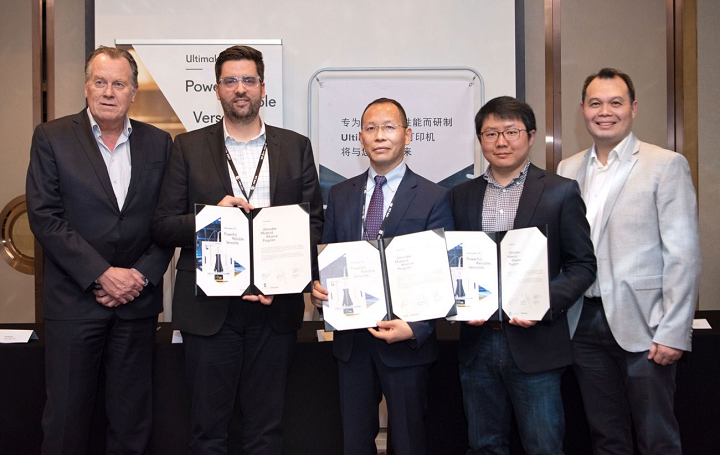
L-R: From Jos Burger, CEO Ultimaker; Dr. Blake Teipel, CEO Essentium; Dr. Yihu Yang, CEO eSUN; Dr. Xiaofan Luo, President Polymaker; Benjamin Tan, VP APAC Ultimaker
Each new member of the alliance brings something important to the table. For instance, recycling is a topic that’s widely discussed around the world, and it seems like helpful initiatives are popping up all over.
“We are specialized in the industrialization of biodegradable polymers. We are delighted to join the Ultimaker Materials Alliance Program with material print profiles of PETG, ePA-CF, and HIPS (High Impact Polystyrene), since it allows us to speed up the development of eco-friendly 3D printed products by using renewable resources,” said eSUN’s CEO Dr. Yihu Yang.
So engineers in the electronics industry can benefit from FFF 3D printing, the materials used must be ESD safe. Now, print profiles in the Ultimaker Marketplace are available with just these properties.
“At Essentium we are committed to creating industrial solutions for the world’s top manufacturers and bridging the gap between 3D printing and machining. We have partnered with BASF, the world’s largest chemical producer, to create the Ultrafuse-Z line, which is a series of ESD safe filaments that are powered by Essentium,” explained Dr. Blake Teipel, CEO of Essentium. “We offer material print profiles for Ultrafuse-Z PCTG in the Ultimaker Marketplace, an industrial grade filament that is specifically formulated to be ESD safe.”
Discuss this news and other 3D printing topics at 3DPrintBoard.com or share your thoughts in the Facebook comments below.
[Source/Images: Ultimaker]

